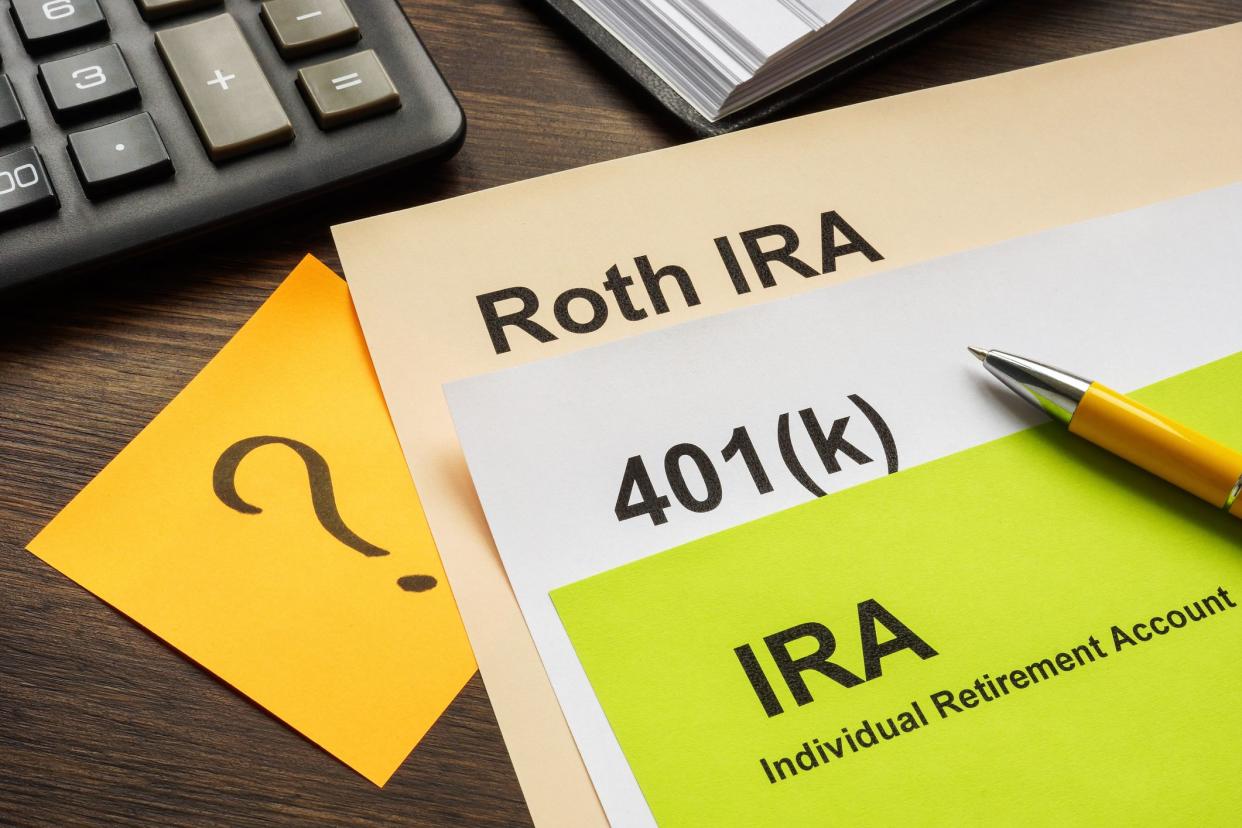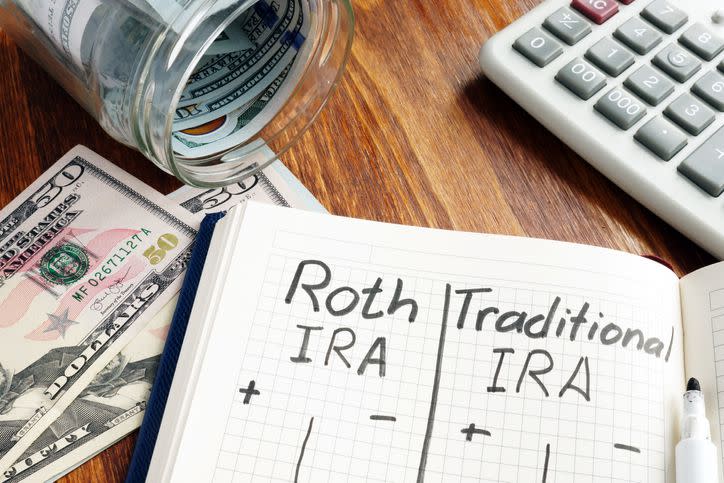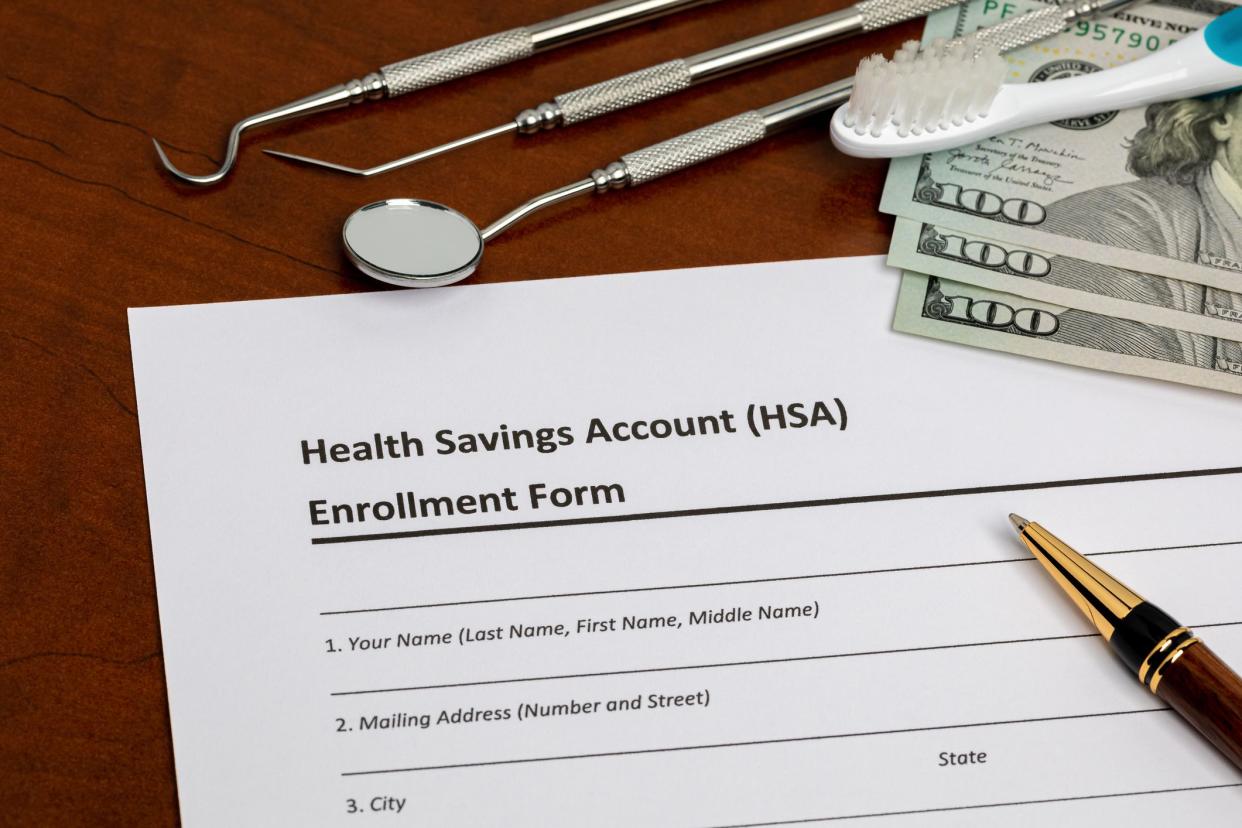5 Ways to Invest for Retirement After a 401(k)

How Should I Invest for Retirement After a 401(k)?
“I’m 45 and have arranged my lifestyle to live on about $18,000 per year. Since I don’t have a mortgage, any other debt, or kids at home, this income covers my expenses, barring any surprises.
After receiving a cash windfall, I put most of it in a high-yield savings account and CDs. I also have a couple of retirement accounts from previous jobs and a Roth IRA that I plan to max out every year. After that, If I have more money, where should I invest it?”
Thanks for your question, Andrea! I love that you’re so focused on investing, even though your lifestyle includes a relatively low income.
Whether you max out a retirement plan at work, don’t have one, or are self-employed, there are terrific investment options to consider besides a 401(k). Based on your financial situation and goals, this post will review the best places to regularly invest or stash a cash windfall.

What’s the purpose of my money?
Before making decisions about the best place to invest, be sure you know the purpose of your money. For instance, do you need to save it for short-term expenses, like an upcoming vacation or buying a home in the next few years? Or should it be invested for long-term goals, such as retirement?
Savings are for emergencies and significant purchases you want to make within a year or two. That money should never be invested because there’s a risk that its value could decline in the short term. To preserve it, always keep savings in an FDIC-insured bank or money market account.
However, funds for longer-term goals, such as paying for a young child’s college and retiring, should be invested for growth. That means taking some calculated risk so your balance gets higher returns.
Andrea didn’t mention how much she has in her high-yield savings, but a good rule is to keep at least three to six months’ worth of living expenses in a liquid, FDIC-insured account.
That’s essential for managing unexpected expenses and hardships, like losing your job, making home repairs, or paying medical bills. Plus, a healthy emergency fund can be the ticket for staying out of debt when surprise bills pop up. So, before investing extra money, it’s wise to shore up your financial defenses.

5 Ways to Invest for Retirement After a 401(k)
Whether you’re like Andrea and don’t have a 401(k), or you have one and typically max it out, here are five of the best places to prioritize extra money you can invest.
Contribute to a Roth IRA.
After maxing out an employer-sponsored retirement plan or investing without one, a Roth IRA is your best option. For 2024, the IRA contribution limit is up to $7,000 or $8,000 if you’re over 50.
A Roth IRA is an excellent account because it’s available to anyone with earned income, including minors and seniors. You make after-tax contributions but enjoy tax-free withdrawals after the age of 59.5.
Before 59.5, withdrawals of untaxed earnings from a Roth are subject to taxes and an additional 10% early withdrawal penalty. However, you can withdraw your original contributions at any time, giving you a lot of flexibility to tap a Roth early if needed.
Then, after age 59.5, Roth withdrawals are tax and penalty-free. In addition, there are no required minimum distributions (RMDs). You can withdraw as much as you wish or leave the account to your heirs.
The downside to a Roth IRA is that it has income limits to make contributions. So, it’s not an option when you’re a high earner. For 2024, if your modified adjusted gross income (MAGI) is below the following, you’re eligible to make a partial or full contribution to a Roth IRA:
Single taxpayers must have a MAGI under $161,000.
Married taxpayers filing jointly must have a MAGI under $240,000.
Married taxpayers filing separately must have a MAGI under $10,000 (to make a partial contribution only) or use the single limits if you haven’t lived together in the past year.
Since Andrea said her income is $18,000, she’s below the limit as either a single or married person filing a joint tax return. So, maxing out her Roth IRA is a terrific money move.
Unlike a Roth IRA, a Roth 401(k) or a Roth 403(b) at work doesn’t have income limits.

2. Contribute to a traditional IRA.
If your income exceeds the Roth IRA income limits, your next best place to invest is a traditional IRA. Unlike a Roth IRA, a traditional IRA has no income limits.
With traditional retirement accounts, you make pre-tax contributions, giving you an upfront tax deduction in the current year—even if you don’t itemize deductions on your tax return.
However, your and your spouse’s income affects whether you can deduct traditional IRA contributions when participating in a workplace retirement plan in the same year.
When your 2024 MAGI reaches $87,000 as a single, you can’t deduct traditional IRA contributions when you also have a retirement plan at work. Nor can married people who file joint taxes with a MAGI at or above $143,000.
Additionally, if you’re not covered by a workplace retirement plan but your spouse is, the
MAGI cutoff for deducting all your traditional IRA contributions is $230,000.
To clarify, you or your spouse can contribute to or max out a workplace plan and a traditional IRA in the same year, no matter how much you earn. However, depending on your income, some or all of your traditional IRA contributions may not be tax-deductible.

3. Open a self-employed retirement account.
If you do freelance work, are a solopreneur, or run a business on the side of a day job where you participate in a 401(k), you can also have a self-employed retirement plan. The most popular are the solo 401(k) and SEP-IRA, which allow you to contribute much more than other retirement accounts.
If you have business income, the 2024 maximum for either plan is up to $69,000. However, unlike SEP-IRAs, solo 401(k)s allow catch-up contributions, giving those over 50 a maximum contribution of $76,500 ($69,000 plus $7,500).
Note that the total includes your workplace contributions. For instance, if you’re under 50 and max out a 401(k) by contributing $23,000, you could put up to $46,000 ($69,000 – $23,000) in a solo 401(k) if you have that much business income.
That’s an excellent way for entrepreneurs without an employer-sponsored retirement plan or those with one to save more for retirement.

4. Use a health savings account (HSA).
After exhausting retirement account options, the next best place to invest, whether you have a retirement plan at work or not, is a health savings account (HSA). However, it’s only available when you have an HSA-eligible health plan.
If you qualify, the 2024 HSA contribution limits are up to $4,150 when you have an individual health plan or up to $8,300 for a family plan. HSA contributions are tax-deductible, and you can invest them for tax-free growth. You can withdraw funds at any time to pay (or reimburse yourself) tax-free for a broad range of eligible healthcare expenses.

5. Invest using a taxable brokerage account.
A taxable brokerage account is the next best place to save after maxing out various retirement accounts and an HSA. While it doesn’t cut your taxes, it’s incredibly flexible because you can tap it before age 59.5 for any reason without penalty.
The best brokerage accounts allow you to choose from many investments, such as stocks, bonds, exchange-traded funds, index funds, and mutual funds. Unlike a retirement account, you pay capital gains tax on brokerage withdrawals. That could be much lower than the ordinary income tax rate you must pay for traditional retirement distributions.
Some investing firms offer tailored portfolios based on your timeline, goals, and risk tolerance, making it easy to diversify. And many terrific robo-investing platforms, such as Betterment and Empower, make it simple to get started.
If you need help managing it or choosing investments for any retirement account, get advice from a professional, such as a certified financial advisor, tax accountant, or retirement planner.
This article originally appeared on QuickandDirtyTips.com and was syndicated by MediaFeed.org.

